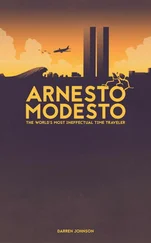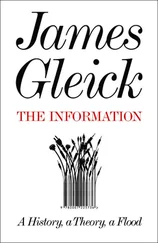James Gleick - Time Travel
Здесь есть возможность читать онлайн «James Gleick - Time Travel» — ознакомительный отрывок электронной книги совершенно бесплатно, а после прочтения отрывка купить полную версию. В некоторых случаях можно слушать аудио, скачать через торрент в формате fb2 и присутствует краткое содержание. Год выпуска: 2016, Издательство: Knopf Doubleday Publishing Group, Жанр: Старинная литература, на английском языке. Описание произведения, (предисловие) а так же отзывы посетителей доступны на портале библиотеки ЛибКат.
- Название:Time Travel
- Автор:
- Издательство:Knopf Doubleday Publishing Group
- Жанр:
- Год:2016
- ISBN:нет данных
- Рейтинг книги:5 / 5. Голосов: 1
-
Избранное:Добавить в избранное
- Отзывы:
-
Ваша оценка:
- 100
- 1
- 2
- 3
- 4
- 5
Time Travel: краткое содержание, описание и аннотация
Предлагаем к чтению аннотацию, описание, краткое содержание или предисловие (зависит от того, что написал сам автор книги «Time Travel»). Если вы не нашли необходимую информацию о книге — напишите в комментариях, мы постараемся отыскать её.
Time Travel — читать онлайн ознакомительный отрывок
Ниже представлен текст книги, разбитый по страницам. Система сохранения места последней прочитанной страницы, позволяет с удобством читать онлайн бесплатно книгу «Time Travel», без необходимости каждый раз заново искать на чём Вы остановились. Поставьте закладку, и сможете в любой момент перейти на страницу, на которой закончили чтение.
Интервал:
Закладка:
Science fiction contains an abundance of stories where the plot centres around certain individuals who, having operated complex mechanical devices, find themselves transported back to the past.
Besides reading the stories, he is reading the philosophical literature, beginning with Hospers’s proof of the impossibility of time travel. He thinks Hospers is just confused. Reichenbach is confused, too (that would be Hans Reichenbach, author of The Direction of Time ), and so is Čapek (Milič Čapek, “Time in Relativity Theory: Arguments for a Philosophy of Becoming”). Reichenbach argued for the possibility of “self encounters”—the “younger ego” meets the “older ego,” for whom “the same occurrence takes place a second time,” and though this may appear paradoxical it is not illogical. Dwyer begs to differ: “It is this sort of talk that has given rise to so much confusion in the literature.” Čapek is drawing diagrams with “impossible” Gödelian world lines. Likewise Swinburne, Whitrow, Stein, Gorovitz (“Gorovitz’s problems, of course, are all of his own making”) and indeed Gödel himself, who misconstrues his own theory.
They all make the same error, according to Dwyer. They imagine that a time traveler could change the past. That cannot happen. Dwyer can live with other difficulties created by time travel: backward causation (effects preceding their causes) and entity multiplication (time travelers and time machines crossing paths with their doubles). But not this. “Whatever else time travel may entail,” he says, “it does not involve changing the past.” Consider old T, using his Gödelian spacetime loop to travel back from 1974 to 1950, when he meets young T.
The encounter is of course recorded twice in the mental history of the time traveller; while young T ’s reaction to his encounter with T may be one of fear, scepticism, joy, etc., T, for his part, may or may not recall his feelings when, in his youth, he was confronted by a person claiming to be his older self. Now of course it would be self contradictory to say that T does something to young T which, by his memory, he knows does not happen to him.
Of course.
Why can’t T go back and kill his grandfather? Because he did not. It’s that simple.
—
EXCEPT—of course—it’s never that simple.
Robert Heinlein, having created his multitude of Bob Wilsons in 1939, punching one another before self-explaining the mysteries of time travel, revisited the paradoxical possibilities twenty years later in a story that outdid all its predecessors. It was titled “ ‘—All You Zombies—’ ” and published in Fantasy and Science Fiction after a Playboy editor turned it down because the sex made him queasy (it was 1959). *5The story has a transgender plot element, a bit forward for the era but necessary to accomplish the time-travel equivalent of a quadruple axel: the protagonist is his (/her) own mother, father, son, and daughter. The title is also the punchline: “I know where I came from—but where did all you zombies come from?”
Could anyone top this? In purely numerical terms—sure. In 1973 David Gerrold, who had been a young television writer for the short-lived (and, later, long-lived) Star Trek, published a novel, The Man Who Folded Himself, featuring a college student named Daniel who receives a Timebelt from a mysterious “Uncle Jim,” complete with instructions. Uncle Jim urges him to keep a diary, and a good thing, too, because life quickly gets complicated. We soon struggle to keep track as the cast of characters expands accordionlike to include Don, Diane, Danny, Donna, ultra-Don, and Aunt Jane—all of whom are (as if you didn’t know) the same person, on a looping temporal roller coaster.
So many variations on a theme. The paradoxes multiply almost as fast as the time travelers, but when you look closely, they are all the same. There is just one paradox, wearing different costumes to suit the occasion. Sometimes it is called the bootstrap paradox—a tribute to Heinlein, whose Bob Wilson pulled himself by his bootstraps into his own future. Or the ontological paradox, a conundrum of being and becoming, a.k.a. “Who’s your daddy?” People and objects (pocket watches, notebooks) exist without origin or cause. Jane of “ ‘—All You Zombies—’ ” is her own mother and father, begging the question of where her genes came from. Or: in 1935 an American stockbroker finds a Wellsian time machine (“polished ivory and gleaming brass”) hidden by palm leaves in the Cambodian jungle (“the land of mystery”); he throws the lever and arrives back in 1925, where the machine is polished up and cached in the palm leaves. *6That is its life cycle: a ten-year closed timelike curve. “But where did it come from originally ?” the stockbroker asks a yellow-robed Buddhist. The wise man explains as if to a dunce: “There never was any ‘originally.’ ” *7
Some of the cleverest loops involve pure information. “Mr. Buñuel, I had a nice idea for a movie for you.” A book on how to build a time machine arrives from the future. See also: predestination paradox. Trying to change what’s bound to happen somehow helps make it happen. In The Terminator (1984), a cyborg assassin (played with an idiosyncratic Austrian accent by a thirty-seven-year-old bodybuilder, Arnold Schwarzenegger) travels back in time to kill a woman before she can give birth to the man who is destined to lead a future resistance movement; the cyborg’s failure leaves detritus that makes its own creation possible; etc.
In a way, of course, the predestination paradox predates time travel by several millennia. Laius, hoping to defy the prophecy of his own murder, leaves baby Oedipus in the wilderness to die. Tragically, his plan backfires. The idea of the self-fulfilling prophecy is ancient, though the term is new, coined by the sociologist Robert Merton in 1948 to describe an all-too-real phenomenon: “a false definition of the situation evoking a new behavior which makes the originally false conception come true.” (For example, a warning of gasoline shortages causes panic buying that leads to gasoline shortages.) People have always wondered whether they can escape destiny. Only now, in the era of time travel, we ask whether we can change the past.
All the paradoxes are time loops. They all force us to think about causality. Can an effect precede its cause ? Of course not. Obviously. By definition. “A cause is an object followed by another,” David Hume kept saying. If a child receives a measles inoculation and then suffers a seizure, the inoculation may or may not have caused the seizure. The one thing everyone knows for sure is that the seizure didn’t cause the inoculation.
But we’re not very good at understanding causes. The first person on record as trying to analyze cause and effect by power of ratiocination was Aristotle, who created layers of complexity that have caused confusion ever after. He distinguished four distinct types of causes, which can be named (making allowances for the impossibility of transmillennial translation) the efficient, the formal, the material, and the final. Some of these are hard for us to recognize as causes. The efficient cause of a sculpture is the sculptor, but the material cause is the marble. Both are needed before the sculpture can exist. The final cause is the purpose for which it is made—its beauty, let’s say. Considered chronologically, final causes seem to come later. What is the cause of an explosion: the dynamite? the spark? the bank robber? the safecracking? This line of thought tends to strike modern people as pettifogging. (On the other hand, some professionals find Aristotle’s vocabulary pitiably primitive. They would not want to discuss causal relations without mentioning immanence, transcendence, individuation, adicity, hybrid causes, probabilistic causes, and causal chains.) Either way, we do well to remember that nothing, when we look closely, has a single unambiguous incontrovertible cause.
Читать дальшеИнтервал:
Закладка:
Похожие книги на «Time Travel»
Представляем Вашему вниманию похожие книги на «Time Travel» списком для выбора. Мы отобрали схожую по названию и смыслу литературу в надежде предоставить читателям больше вариантов отыскать новые, интересные, ещё непрочитанные произведения.
Обсуждение, отзывы о книге «Time Travel» и просто собственные мнения читателей. Оставьте ваши комментарии, напишите, что Вы думаете о произведении, его смысле или главных героях. Укажите что конкретно понравилось, а что нет, и почему Вы так считаете.












